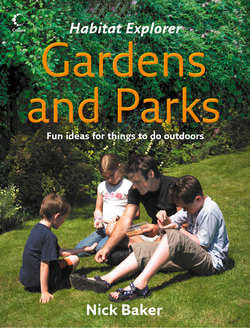Читать книгу Gardens and Parks - Nick Baker - Страница 10
A bird in the hand . . .
ОглавлениеIf being close to wildlife is your goal, then it doesn’t get much closer than when it is sitting on your palm. The robin is the perfect candidate for this. Famously bold, you can train your local bird to come to your hand in as little as a week – see opposite for how you do it. If at any stage you fail, go back a step and keep trying for contact. It is worth it for both of you: your robin will get vital food of the right kind, and you will get the rare thrill of touching a wild bird.
Take my advice
* Despite what some people seem to think, you can feed your birds all year round, just be aware that large, dry food items, such as stale bread crusts and peanuts, can choke young nestlings. So in the summer, either place them in a feeder that allows the birds to only take small bits or crumble and crush the food first.
* Also, don’t panic if you have to go away and your feeders run out. The birds are used to having food resources in the wild that do the same thing. They are adaptable and will find food elsewhere until you resume feeding again.
YOU WILL NEED
> meal worms
> plastic container
> patience
1 Get your robin interested by catching its eye with a plastic container full of wriggling meal worms. Start by simply placing this tub on your regular bird table. Eventually the robin will start feeding on them.
2 Then slowly, as the days go by, move the meal worm container away from the bird table. First move it to the foot of the bird table . . .
3 . . . then move it into the middle of the lawn. Try standing out in the garden while he is feeding, progressively getting closer to him – a step or two every day. Now you can try offering the meal worm in the same tub but at arm’s length.
4 Then, when he seems quite relaxed, one day remove the tub and place the wrigglers in your palm. You should now have a hand tame robin!
Nick’s trick
Different robins have I different tolerance levels so there are no rules to how long getting to within arm’s length will take. Just be patient. Keeping low or even lying down all help.
Take it further
Meal worms are the wriggly larvae of various beetles and can be bought in many pet shops, especially those that deal with reptiles and amphibians. They are really easy to culture in a box in your airing cupboard. All you need is a well-ventilated box with a tight-fitting lid; you can feed the worms on oatmeal, bread, biscuits and the like. Feeding meal worms to the birds is a little trickier, though, as the worms thoughtlessly have a tendency to crawl off, something a peanut most definitely cannot do. Overcome this by serving them up in slippery sided containers – but watch out for rain.
